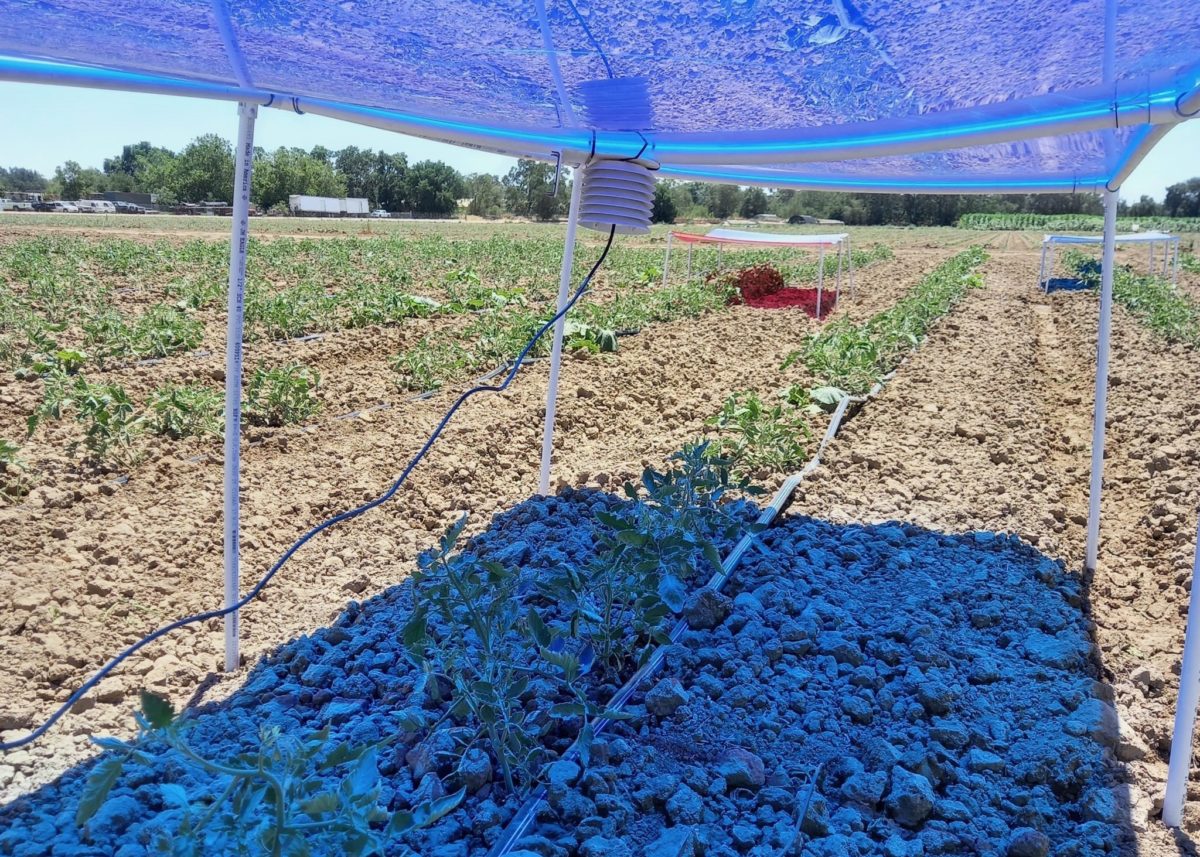Researchers at the University of California, Davis, have purportedly found that the red part of the light spectrum is more efficient for growing plants, while the blue part is better used for electricity production from solar technology. In “Not All Light Spectra Were Created Equal: Can We Harvest Light for Optimum Food-Energy Co-Generation?,” recently published in Earth’s Future, they claim that their discovery could lead to efficiency improvements for agrivoltaic systems.
“Today’s solar panels take all the light and try to make the best of it,” said Matteo Camporese, one of the paper’s authors. “But what if a new generation of photovoltaics could take the blue light for clean energy and pass the red light onto the crops, where it is most efficient for photosynthesis?”
The scientists developed a photosynthesis and transpiration model to account for different light spectra. The model reproduced the response of various plants, including lettuce, basil, and strawberries, to different light spectra in controlled lab conditions.
The results suggest that the blue part of the light spectrum carries more potential energy, while also being “the less efficient in terms of carbon assimilation and water use and could be effectively filtered out to produce solar energy,” the academics said. On the other hand, the red spectrum could efficiently produce biomass and increase crop yield.
The academics believe their model could be used to inform future development of wavelength-selective semi-transparent solar modules.
Popular content
“Organic PV … provide unique opportunities to ‘harvest' some parts of the incoming light spectrum to generate energy and letting through mostly the parts of the spectrum that are more useful for the plants,” the researchers said. “To fully reach this potential, accurate plant models are needed that explicitly consider light … spectra to compute the crop productivity.”
The study suggests that wavelength-selective agrivoltaic systems might be sensitive to environmental factors and crop type. The authors recommended using such systems in water-limited areas, rather than in areas with limited solar irradiation. They also noted that certain crops, like strawberries, are less sensitive to light treatments using different light spectra.
“Therefore, this model could be used to preliminarily assess the suitability of different plant species for use in agrivoltaics,” they concluded.
This content is protected by copyright and may not be reused. If you want to cooperate with us and would like to reuse some of our content, please contact: editors@pv-magazine.com.


This is surprising: common literature says that chlorophyl a en b perform efficient photosynthesis in the red and in the blue (with green being reflected), that’s why most commercial growing lamps have a mix of red and blue light. In my plant physiology lectures it was also claimed that more and more research would apparently characterize the role of the red and blue light as “cooperative/complementary” for photosynthesis as opposed to merely “additive”. So this news comes a bit out of the blue for me.
It has been common knowledge that using red ground cover or reflective background really improves tomato yields. Knowing which plants flourish under which light conditions must continue to be a heavily studied and tested niche in physics/biology.
Discusses ways to improve agrivoltaic efficiency through light spectrum optimization. The post covers the recent research and findings on the topic, and how it can be applied in practice. The post is informative and well-researched, providing a good understanding of the topic for those in the renewable energy industry.
The article discusses a study on how adjusting the light spectrum in agrivoltaic systems can improve their efficiency. The article provides a detailed explanation of the study and the results. The article highlights the potential benefits of agrivoltaic systems, which combine solar panels with agriculture, and how optimizing the light spectrum can make them even more effective. The article is informative and highlights the potential for sustainable agriculture practices.
The article discusses a study on optimizing light spectrum to improve the efficiency of agrivoltaic systems, which combine solar panels with agriculture. The article is informative and highlights the potential for sustainable agriculture practices.
It’s exciting to see the potential for improving agrivoltaic efficiency through the optimization of light spectrum. I appreciate the detailed explanations and examples provided in this article, as well as the implications for the future of sustainable agriculture and renewable energy. As someone who is interested in environmental issues and technology, I found this article fascinating and thought-provoking.
Agrivoltaics is an emerging field that combines agriculture and solar energy, and this blog post from PV Magazine provides valuable information on how to improve agrivoltaic efficiency through light spectrum optimization. It’s great to see the emphasis on factors such as plant growth, energy production, and sustainability, as these are important considerations for any agrivoltaic project. The information and insights provided in this post are a great resource for anyone interested in the intersection of agriculture and solar energy.
I want to thank you for releasing this blog post regarding our research showing that semi-transparent PV modules that selectively absorb blue light while letting red light through can improve crop output. According to studies conducted at the University of California, Davis, red light is superior for plant growth, while blue light is optimal for harnessing the sun’s energy to generate power. I appreciate you taking the time to compile all of this information and share it with us. Excellent piece!